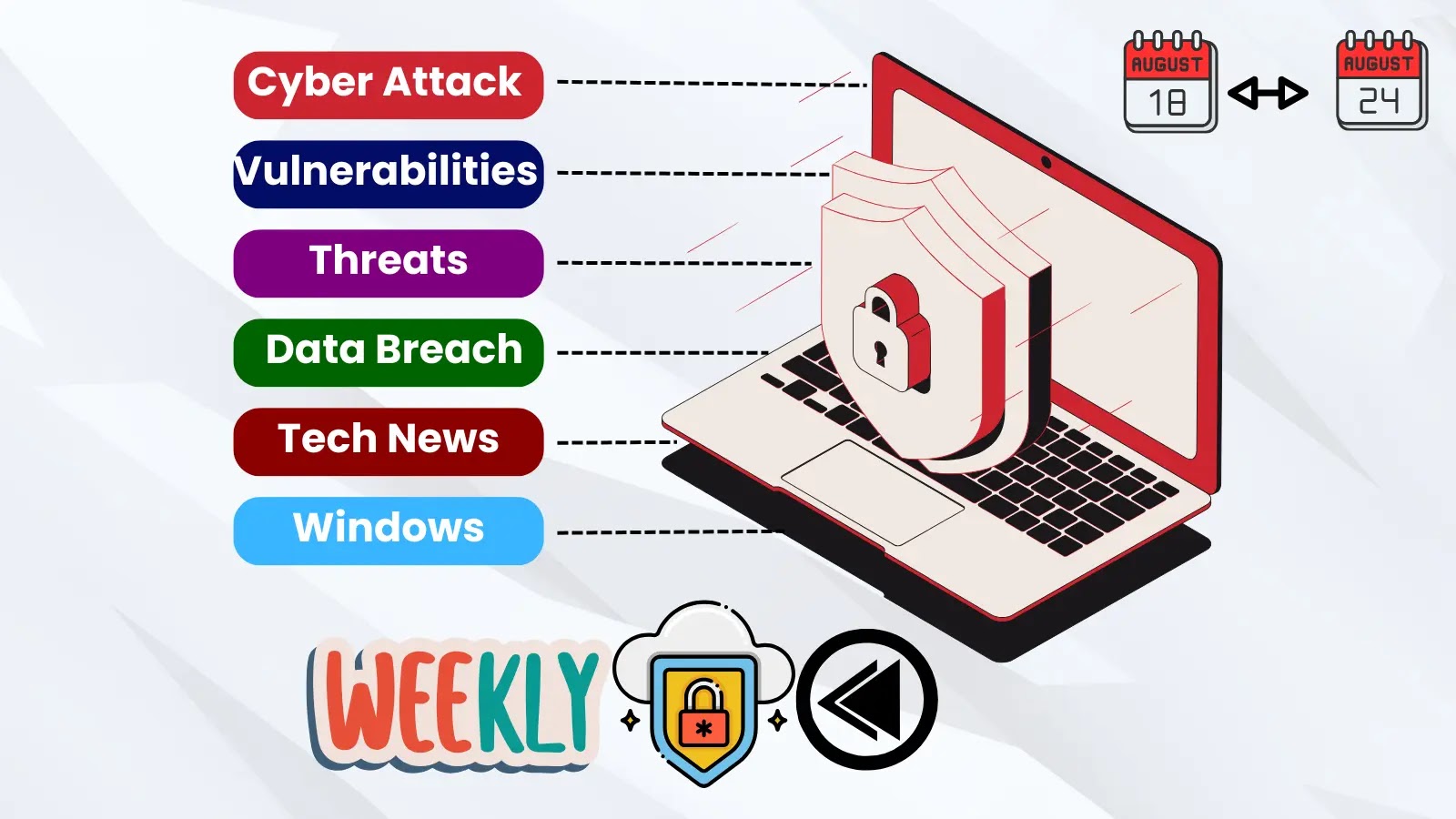
Weekly Cybersecurity News Recap : Apple 0-day, Chrome, Copilot Vulnerabilities and Cyber Attacks
The cybersecurity landscape remains a volatile domain, constantly challenged by new threats and the relentless pursuit of vulnerabilities. This past week serves as a stark reminder of this reality, with high-severity disclosures and active exploitation reports dominating headlines. From Apple’s urgent zero-day patches to critical vulnerabilities impacting widely used platforms like Chrome and Microsoft Copilot, and the pervasive threat of cyberattacks, understanding these developments is paramount for maintaining robust digital defenses. For IT professionals, security analysts, and developers, staying apprised of these threats isn’t just about compliance; it’s about proactively safeguarding critical assets and data.
Apple 0-Day Vulnerability: A Familiar Urgency
Apple devices, often lauded for their security, once again found themselves in the crosshairs with the disclosure of a critical zero-day vulnerability. This flaw, affecting iOS, iPadOS, and macOS, prompted Apple to push out emergency patches. The rapid response underscores the severity and the high likelihood of active exploitation in the wild. While specific CVE details related to this particular “yet another” rapid response were not explicitly provided in the source, it’s crucial to acknowledge Apple’s ongoing battle against sophisticated attackers leveraging such critical flaws. Historically, nation-state actors and surveillance firms have a track record of exploiting previously undisclosed Apple vulnerabilities to target high-value individuals.
Remediation Actions for Apple Users
- Immediate Updates: Users of Apple devices (iPhones, iPads, Macs) should update their operating systems to the latest available versions immediately. Enable automatic updates if not already configured.
- Software Vigilance: Remain vigilant about installing only trusted applications from official app stores.
- Phishing Awareness: Be wary of suspicious links or attachments, as these vulnerabilities are often chained with social engineering tactics to achieve initial access.
Chrome and Copilot Vulnerabilities: Impacting Everyday Tools
Beyond Apple, the week also highlighted significant security concerns for other widely used technologies. Google’s Chrome browser and Microsoft’s Copilot, both integral to many professional workflows, were reported to have critical vulnerabilities. While the specific CVEs weren’t detailed in the provided source, the mention of these platforms points to the broad attack surface faced by individuals and organizations daily.
- Chrome Vulnerabilities: Browsers are a primary gateway to the internet, and vulnerabilities can lead to drive-by downloads, credential theft, or remote code execution. Regular updates are non-negotiable.
- Microsoft Copilot Vulnerabilities: As AI-powered tools like Copilot become more integrated into business operations, their security posture is critical. Flaws here could expose sensitive organizational data or allow for malicious code injection, impacting an organization’s intellectual property and operational integrity.
Remediation Actions for Chrome and Copilot Users
- Browser Updates: Ensure your Chrome browser is always updated to the latest version. Chrome typically updates automatically, but a manual check (Chrome Menu > Help > About Google Chrome) can confirm this.
- Software Patching: For Copilot and other AI/ML tools, ensure that your organization follows vendor-specific patching recommendations and stays informed about security advisories.
- Principle of Least Privilege: Apply the principle of least privilege to users and applications accessing AI tools to minimize potential damage from exploitation.
- Configuration Review: Regularly review security configurations for cloud-based services and AI platforms.
The Pervasive Threat of Cyber Attacks
The ongoing reports of “cyberattacks” in general further emphasize the persistent and evolving nature of the threat landscape. These attacks encompass a wide range of methodologies, including ransomware, phishing campaigns, data breaches, and sophisticated supply chain attacks. The continuous targeting of various sectors underscores the need for a multi-layered defense strategy.
General Remediation Actions Against Cyber Attacks
- Employee Training: Conduct regular cybersecurity awareness training for all employees, focusing on phishing, social engineering, and secure browsing habits.
- Strong Authentication: Implement multi-factor authentication (MFA) across all critical systems and applications.
- Regular Backups: Maintain isolated, air-gapped backups of critical data to ensure recovery from ransomware attacks.
- Network Segmentation: Segment networks to limit the lateral movement of attackers in the event of a breach.
- Incident Response Plan: Develop and regularly test a comprehensive incident response plan.
- Endpoint Detection and Response (EDR): Utilize EDR solutions to monitor endpoints for suspicious activity and facilitate rapid response.
- Vulnerability Management Program: Implement a robust vulnerability management program that includes regular scanning and patching cycles.
Tools for Cybersecurity Resilience
Building a resilient cybersecurity posture requires leveraging effective tools for detection, prevention, and response. Below are examples of categories of tools and their purposes:
| Tool Name/Category | Purpose | Link (Example) |
|---|---|---|
| Vulnerability Scanners (e.g., Nessus, Qualys) | Identify security weaknesses and misconfigurations in systems and applications. | https://www.tenable.com/products/nessus |
| Endpoint Detection & Response (EDR) Solutions | Monitor endpoint activities, detect threats, and enable rapid response to incidents. | https://www.crowdstrike.com/products/endpoint-security/falcon-insight-edr/ |
| Security Information and Event Management (SIEM) | Collect, normalize, and analyze security logs from various sources to detect threats and manage incidents. | https://www.splunk.com/ |
| Multi-Factor Authentication (MFA) Solutions | Add an extra layer of security beyond passwords. | https://duo.com/ |
| Threat Intelligence Platforms | Provide timely, actionable insights into new and emerging threats. | https://www.recordedfuture.com/ |
Key Takeaways for a Proactive Defense
This past week’s cybersecurity news underscores several critical principles for all organizations and individuals. First, the prevalence of zero-day exploits, particularly against high-profile targets like Apple, means that even seemingly secure systems require constant vigilance and immediate patching. Second, foundational security practices — regular updates, strong authentication, and employee awareness — remain the most effective front-line defenses against a broad spectrum of threats. Finally, the evolving nature of cyberattacks, incorporating AI-powered tools and advanced social engineering, demands a proactive, adaptable, and multi-layered security strategy. Staying informed, implementing robust security controls, and fostering a culture of cybersecurity awareness are not merely best practices; they are essential for navigating the complex and challenging digital landscape.





